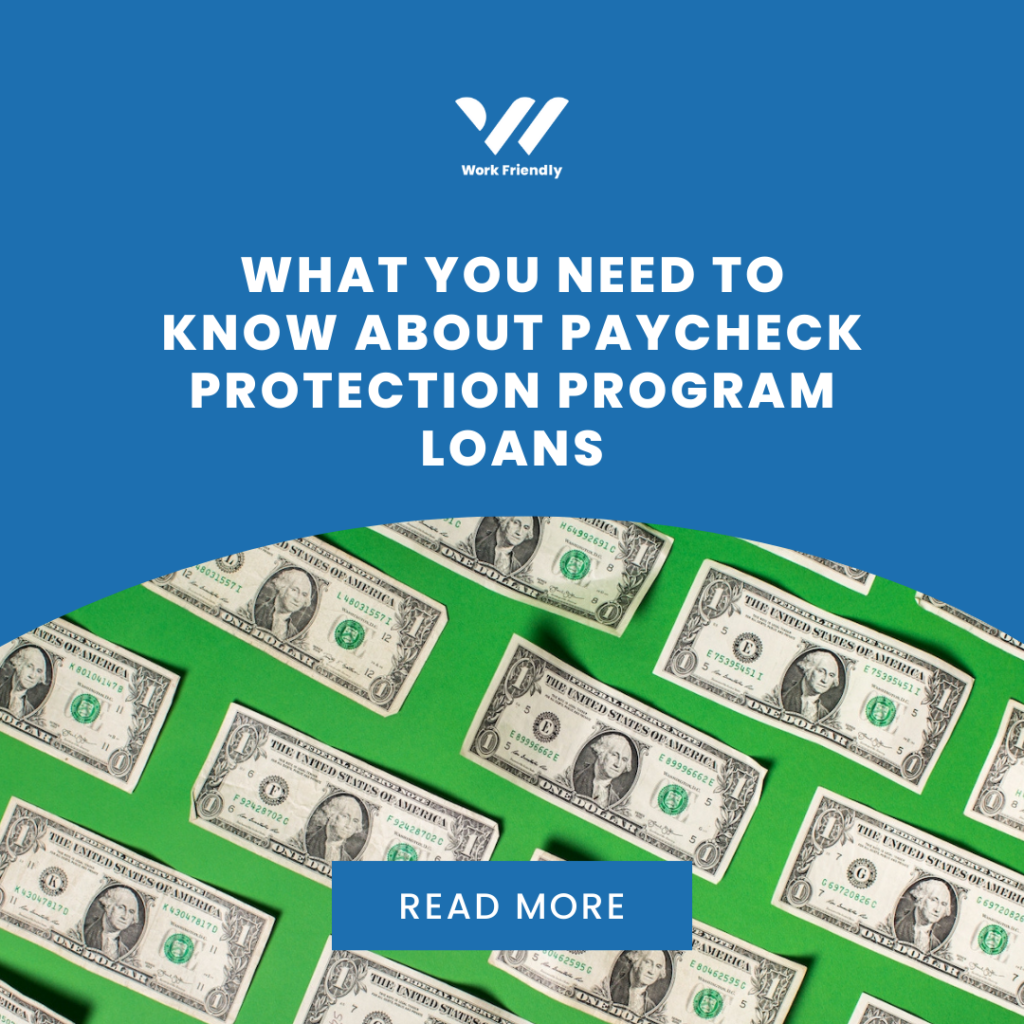Are you thinking of slowing down recruiting? Think again. After reading all the benefits of the Paycheck Protection Program, you may change your tune. And with 32% unemployment right now, there is some exceptional talent on the market.
Details of the PPA
- Small business owners can borrow up to $10 million to pay for payroll, rent, mortgage interest, and utilities under the newly available SBA 7(a) Paycheck Protection Program (PPP) Loan.
- The loan is available from any Small Business Administration (SBA)-approved lender as well as through online loan brokers.
- Loan proceeds used for eligible expenses will be forgiven for up to eight weeks of eligible expenses, which essentially, converts the loans into small business grants.
The Paycheck Protection Loan Program can help small businesses overcome:
- Disruptions to the supply chain: Businesses that have lost the ability to get goods delivered entirely or at a reasonable price.
- Challenges with staffing: Companies that are struggling to take on employees, find staff, or otherwise hire during this time.
- Reduced earnings: Small businesses with declining earnings due to COVID-19.
- Lost customers: Storefronts that have less foot traffic due to orders to stay inside.
- Closure: Businesses that have had to close entirely due to state requirements like gyms.
How does my small business get started
- Determine eligibility
- Gather necessary documents
- Select a lender
- Submit an application
- Receive funding
- Track payroll, utility, and rent or mortgage payments
- Apply for forgiveness
- Repay any remaining balance
What can you consider payroll?
- Salary, wages, commission, or similar compensation
- Cash or tip equivalent
- Vacation, parental, family, medical, or sick leave
- Allowance for dismissal or separation
- Provisions of group healthcare benefits, including insurance premiums
- Retirement benefits
- State or local tax that’s part of employee compensation like unemployment taxes
What can you cover with the loan?
- Payroll costs, including taxes
- Insurance premiums and costs associated with healthcare benefits during periods of paid sick, medical, or family leaves
- Employee salaries, commissions, or similar compensations
- Mortgage interest
- Rent
- Utilities
- Interest on debt incurred before the covered period
Things that can’t be included in the calculation:
- Any individual employee earning an annual salary greater than $100,000; however, only payments up to that amount are forgivable
- Taxes imposed or withheld under Chapter 21, Chapter 22, or Chapter 24 of the Internal Revenue Code of 1986
- Employees living outside the United States
- Sick leave wages for employees for which the Families First Coronavirus Response Act (Section 7001) offers a tax credit
- Sick leave for self-employed individuals for which the Families First Coronavirus Response Act (Section 7003) offers a tax credit
The sum of the following costs, up to $10 million, will make a business eligible for forgiveness:
- Payroll costs
- Interest payments on mortgage obligations, excluding prepayment and principal
- Rent payments
- Utility payments
The documents required to verify loan forgiveness include:
- Payroll tax filings reported to the IRS
- State income, payroll, and unemployment insurance filings
- Canceled checks, payment receipts, account statements to verify mortgage, lease, and utility obligations
- Coronavirus Response Act (Section 7003) offers a tax credit
What Happens If You Borrow More Than the Forgiveness Amount?
If you borrow more than the amount that will be forgiven, you will be left with a low-interest SBA loan with a two-year repayment term. If the loan funds are used for expenses other than those that are forgivable under this program, you may have a loan balance that enters repayment.
Can I terminate employees while I have the loan?
You are not restricted from letting employees go while you have the loan. However, the loan amount forgiven will decline to equal the actual payroll costs over that time. So, while you can let go of an employee, you cannot receive forgiveness for unpaid payroll expenses.
How long will this program last?
It’s still not completely clear how long lenders will take to provide the funding. Some institutions are still seeking guidance on how and when to accept your application, but your lending provider can help you with those details.
The program officially runs through June 30, 2020. The restriction on available funds and the relatively easy qualifications have led many lenders to expect that funds will run out. So speak to your lender very soon if you can!
The paycheck protection loan is here to help. That’s why, it may be a great time to scoop up available talent. Work Friendly is here to talk strategy on how to best move forward on recruiting during this crazy time. We are also available to help you navigate questions around the Paycheck Protection Program. Please reach out to us at natalie@workfriendlyconsulting.com



